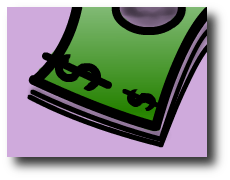m-Fin ACCOUNTING SUMMARY
- ASSETS – LIABILITIES = EQUITY.
- Revenues and expenditures change the values in this equation over time.

This is the basics of accounting, and the basis of a new report, m-Fin ACCOUNTING SUMMARY. It’s a one-line-per-speedtype kind of report that is good for auxiliary funds (2x funds) but can be used for other funds too. It has a few features particular to how things work at CU, as follows.
Cash
Whenever we are contemplating assets there is particular interest in cash so, even though this report is a high level summary, cash gets its own separate column.
Cash rollup transfers
For some sets of speedtypes cash is managed collectively in a parent speedtype. In these cases there are automatic transactions to move cash, using account code 199999, out of the child speedtypes. These transactions are summarized into the CASH ROLLUP TRANSFERS column.
Restatements
When a FOPPS code changes, the assets and liabilities need to be moved over to the new FOPPS. This happens for example when a new org number is going to be used. Account code 199990 is used for these transactions. They are summarized into the RESTATEMENTS column.
Negative numbers
This applies to all m-Fin reports.
In CU’s accounting system liabilities are stored as negative amounts. Ever wonder why? Because database software is good at summing records. Imagine you have a bunch of records, some assets and some liabilities. If you store the liabilities as negative amounts you can ask the database to sum the records and it does the left side of the accounting equation (1) for you. Because revenues go on the right side of the equation, they also are stored as negative numbers. Welcome to accounting. ![]() I know most of you are not accountants but a few years ago an attempt to “normalize” the negative amounts, flipping signs in the reports, caused confusion and so we have not gone down that road with m-Fin.
I know most of you are not accountants but a few years ago an attempt to “normalize” the negative amounts, flipping signs in the reports, caused confusion and so we have not gone down that road with m-Fin.
Interested? Test.
The strengths of this new report are that it is succinct and fast, shows cash, and shows transactions that only are implied on the other reports (restatements and cash rollups). It’s available for you to test in Cognos QA. Give it a test drive. [30-Nov-2012 This report is in production now.]




